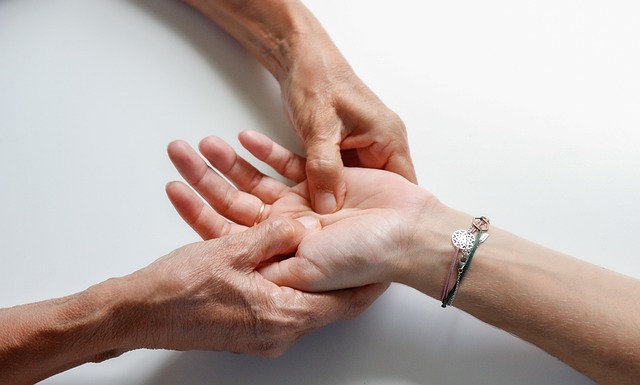Post-Traumatic Stress Disorder (PTSD) is a debilitating mental health condition caused by traumatic events, characterized by intrusive thoughts, nightmares, and avoidance behaviors. Effective PTSD treatment includes Cognitive Behavioral Therapy (CBT), Eye Movement Desensitization and Reprocessing (EMDR), Exposure Therapy, and supportive techniques like mindfulness, physical activities, creative outlets, and support groups. These approaches help individuals process trauma, reduce symptoms, regain control over their lives, and foster resilience.
“Discover effective strategies for managing Post-Traumatic Stress Disorder (PTSD) with this comprehensive guide. Understanding PTSD involves recognizing its profound impact on individuals affected by traumatic events. This article explores common symptoms and delves into various therapy approaches, including Cognitive Behavioral Therapy (CBT) and Exposure Therapy, offering valuable insights for healing. Additionally, we uncover supportive measures to enhance PTSD treatment, providing a holistic approach to managing this condition.”
Understanding PTSD: Unveiling the Disorder and Its Impact

PTSD, or Post-Traumatic Stress Disorder, is a complex mental health condition that arises from exposure to traumatic events. It’s more than just feeling scared or anxious; it’s a profound and lasting impact on an individual’s emotional state and daily functioning. Those affected often relive the trauma through intrusive thoughts, nightmares, and intense emotions, even years after the initial event. This disorder can significantly impair a person’s ability to work, maintain relationships, and engage in activities they once enjoyed.
Recognizing the severity of PTSD symptoms is crucial for seeking effective treatment. Fortunately, there are evidence-based therapies available, such as Cognitive Behavioral Therapy (CBT) and Eye Movement Desensitization and Reprocessing (EMDR), that have proven successful in managing PTSD. These treatments help individuals process traumatic memories, reduce avoidance behaviors, and develop healthier coping strategies. The goal of PTSD treatment is to empower individuals to regain control over their lives, minimize symptoms’ impact, and foster resilience.
Common Symptoms of PTSD: Recognizing the Signs

Post-Traumatic Stress Disorder (PTSD) is a complex condition that can significantly impact an individual’s daily life and well-being. Recognizing the common symptoms is the first step towards understanding and managing PTSD effectively. Many individuals with PTSD experience intense flashbacks or nightmares, reliving the traumatic event over and over again. These intrusive memories can be so vivid that they feel like the past is happening in the present, causing emotional distress and disruption in daily routines.
Another prevalent symptom is avoidance behavior, where people try to distance themselves from reminders of the trauma. This might include steering clear of certain places, people, or activities that evoke painful memories. As a result, individuals may isolate themselves, struggle with relationships, and experience a sense of detachment from their surroundings. Additionally, heightened arousal and anxiety are common, leading to difficulty sleeping, irritability, and an exaggerated startle response, where even minor noises can trigger intense fear. These symptoms often interfere with normal functioning, making daily tasks challenging and impacting overall quality of life. The key to managing PTSD lies in accessing effective treatments, such as exposure therapy and cognitive behavioral therapy, which have proven successful in helping individuals regain control over their lives.
Therapy Approaches for Effective PTSD Treatment

When it comes to managing Post-Traumatic Stress Disorder (PTSD), therapy plays a pivotal role in helping individuals heal and regain control of their lives. Several effective approaches have emerged, offering hope and improvement for those affected by PTSD. Cognitive Processing Therapy (CPT) is one such evidence-based method that focuses on challenging and modifying negative thoughts and beliefs associated with the traumatic event. By facilitating a deeper understanding and processing of the trauma, CPT enables individuals to reduce symptoms and improve overall functioning.
Another powerful therapy is Eye Movement Desensitization and Reprocessing (EMDR), which assists patients in reliving traumatic memories while simultaneously engaging in bilateral stimulation, such as side-to-side eye movements or auditory tones. This process helps desensitize the individual to the trauma, reducing its emotional impact. EMDR has gained significant recognition for its ability to provide rapid and effective PTSD treatment, allowing individuals to process and resolve traumatic memories more efficiently.
Cognitive Behavioral Therapy (CBT): A Key Player in Healing

Cognitive Behavioral Therapy (CBT) is a highly effective approach for managing Post-Traumatic Stress Disorder (PTSD). This form of therapy focuses on identifying and changing negative thought patterns and behaviors that can contribute to PTSD symptoms. By challenging unhelpful cognitive distortions, CBT helps individuals develop healthier coping mechanisms and improve their overall well-being.
Through structured sessions, CBT enables patients to confront and process traumatic memories while learning valuable skills for stress management and emotional regulation. This evidence-based treatment has been extensively studied and proven successful in reducing PTSD symptoms, offering hope and healing for those affected by trauma.
Exposure Therapy: Confronting Fears to Gain Control

Exposure therapy is a powerful tool in the arsenal of PTSD treatment, focusing on helping individuals confront and manage their fears in a safe, controlled environment. This approach is based on the idea that by repeatedly exposing patients to traumatic memories or situations, they can learn to respond differently, reducing the intensity of symptoms like anxiety, flashbacks, and nightmares. Through gradual exposure, patients gain a sense of control over their fear responses, which is crucial for long-term symptom management.
The therapy involves guiding individuals through various steps, starting from less distressing scenarios and gradually advancing to more challenging ones. This process allows them to face their fears head-on, learn coping strategies, and eventually develop resilience. As patients successfully navigate these exposures, they can apply these skills in real-life situations, helping them manage PTSD symptoms effectively and improve their overall quality of life.
Supportive Measures: Complementary Techniques for Management

In addition to traditional PTSD treatment, several supportive measures and complementary techniques can significantly aid in symptom management. Mindfulness practices, such as meditation and deep breathing exercises, have been shown to reduce anxiety and promote relaxation, helping individuals gain a sense of control over their distressing thoughts and feelings. Yoga and other gentle physical activities also offer benefits, improving mood, reducing stress, and enhancing overall well-being.
Additionally, creative outlets like art therapy, music therapy, and writing can provide safe, expressive avenues for processing trauma. These activities allow individuals to explore and process their emotions in a non-threatening manner, fostering healing and resilience. Support groups and peer connections are another vital component of PTSD management, offering a sense of belonging and understanding within a community of individuals facing similar challenges.
